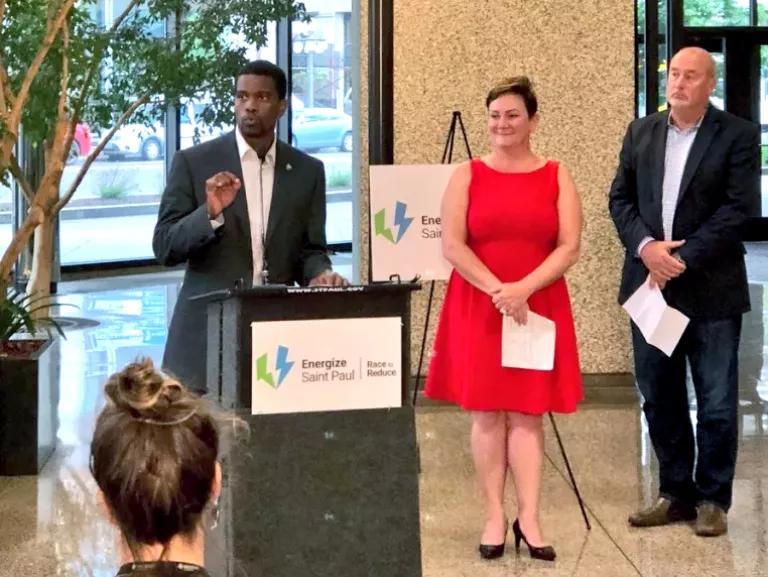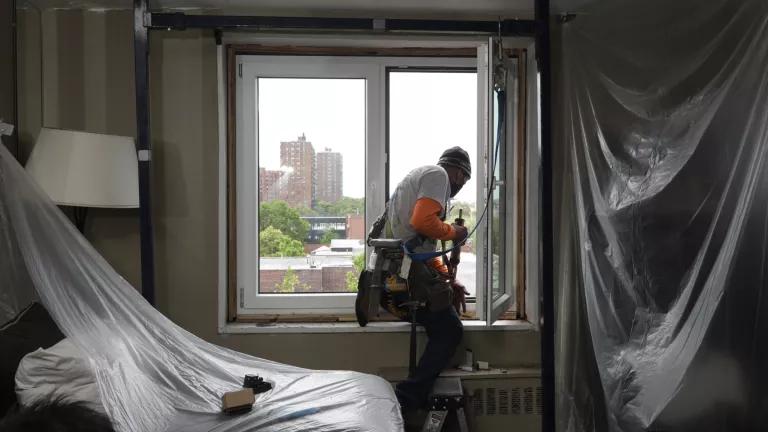Race to Reduce Launched to Energize Saint Paul
Saint Paul Mayor Melvin Carter has kicked off an energy efficiency challenge directed at the city’s largest buildings. Through the program, dubbed the “Race to Reduce,” buildings will be invited to join a cohort that will collectively strive to streamline energy operations, reduce utility costs, and slash greenhouse gas emissions. This event also marked the start of the Energize Saint Paul initiative, a broader effort by the city on building energy efficiency. “Energize Saint Paul is about literally putting power in the hands of tenants, workers, and businesses,” said City Council President Amy Brendmoen. Through programs such as the voluntary efficiency challenge, the initiative will reduce building emissions to assist the city in its goal of carbon neutrality by 2050.

Weston M via Unsplash
Saint Paul Mayor Melvin Carter has kicked off an energy efficiency challenge directed at the city’s largest buildings. Through the program, dubbed the “Race to Reduce,” buildings will be invited to join a cohort that will collectively strive to streamline energy operations, reduce utility costs, and slash greenhouse gas emissions.
In total the city aims to enlist 100 of the city’s largest commercial and multi-family buildings over the three months of the program. Among these participants, the program hopes to reduce emissions four percent by the end of the summer. In total, emissions from commercial and multifamily buildings alone account for 35 percent of citywide emissions in Saint Paul.
Building owners will not be alone in their efforts to reach this goal. In order to facilitate the process of identifying efficiency opportunities, the city will provide tip sheets, newsletters, and networking and training events. Further, the program will be carefully sequenced to scaffold the steps towards efficiency. The month of June will begin the race by providing resources for energy benchmarking, to set a baseline for energy performance and to track future improvements. July will then transition to tune-ups for heating and air conditioning equipment, before turning to energy system scheduling in August.
Through these phases the program hopes to identify concrete opportunities for efficiency upgrades, while creating a network of building managers among the cohort for future collaboration and skill sharing. Ultimately, Saint Paul hopes to become a national leader in building energy efficiency. “Our goal is to make the city of Saint Paul the first place building owners go when they want to lower their utility bills, reduce greenhouse gas emissions, and drive economic growth,” Mayor Carter told the audience at the kick-off.

St. Paul Mayor Melvin Carter announces the launch of Energize Saint Paul and the Race to Reduce challenge program.
Ben Passer
While the Race to Reduce program will end this fall, momentum towards energy efficiency will continue. This event also marked the start of the Energize Saint Paul initiative, a broader effort by the city on building energy efficiency. “Energize Saint Paul is about literally putting power in the hands of tenants, workers, and businesses,” said City Council President Amy Brendmoen. Through programs such as the voluntary efficiency challenge, the initiative will reduce building emissions to assist the city in its goal of carbon neutrality by 2050.
With the release of the Race to Reduce program St. Paul joins a growing list of cities that have used similar challenge programs to mobilize efficiency upgrades among property owners. Recently the city of Providence launched their own challenge program and last month Reno celebrated leaders in their challenge program initiated in 2017. Such programs are foundational in the longer trajectory towards building energy efficiency, by creating local leaders, fostering relationships between like-minded building owners and the city, and by stimulating public interest in energy efficiency.



